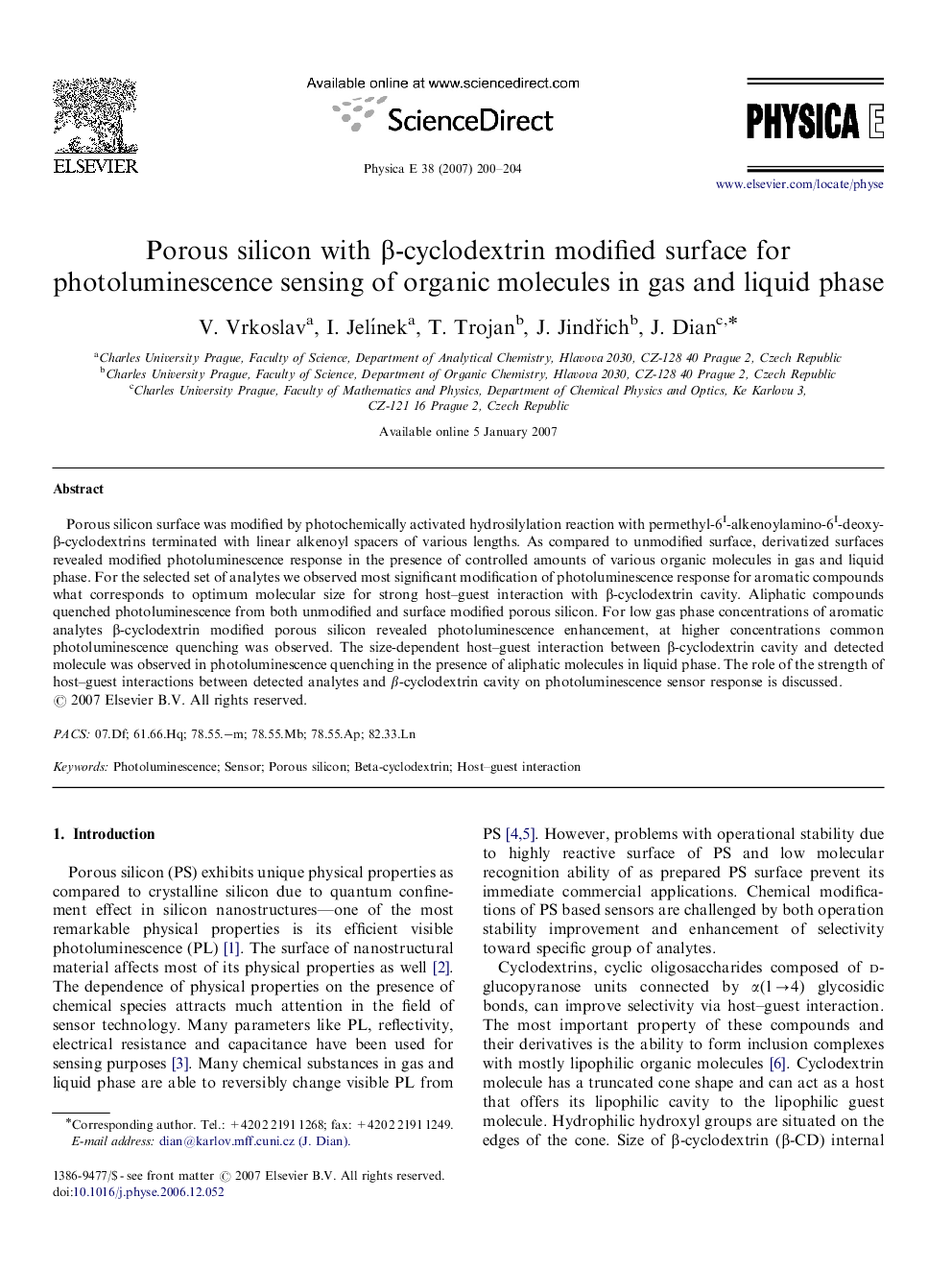| Article ID | Journal | Published Year | Pages | File Type |
|---|---|---|---|---|
| 1547704 | Physica E: Low-dimensional Systems and Nanostructures | 2007 | 5 Pages |
Porous silicon surface was modified by photochemically activated hydrosilylation reaction with permethyl-6I-alkenoylamino-6I-deoxy-β-cyclodextrins terminated with linear alkenoyl spacers of various lengths. As compared to unmodified surface, derivatized surfaces revealed modified photoluminescence response in the presence of controlled amounts of various organic molecules in gas and liquid phase. For the selected set of analytes we observed most significant modification of photoluminescence response for aromatic compounds what corresponds to optimum molecular size for strong host–guest interaction with β-cyclodextrin cavity. Aliphatic compounds quenched photoluminescence from both unmodified and surface modified porous silicon. For low gas phase concentrations of aromatic analytes β-cyclodextrin modified porous silicon revealed photoluminescence enhancement, at higher concentrations common photoluminescence quenching was observed. The size-dependent host–guest interaction between β-cyclodextrin cavity and detected molecule was observed in photoluminescence quenching in the presence of aliphatic molecules in liquid phase. The role of the strength of host–guest interactions between detected analytes and β-cyclodextrin cavity on photoluminescence sensor response is discussed.
